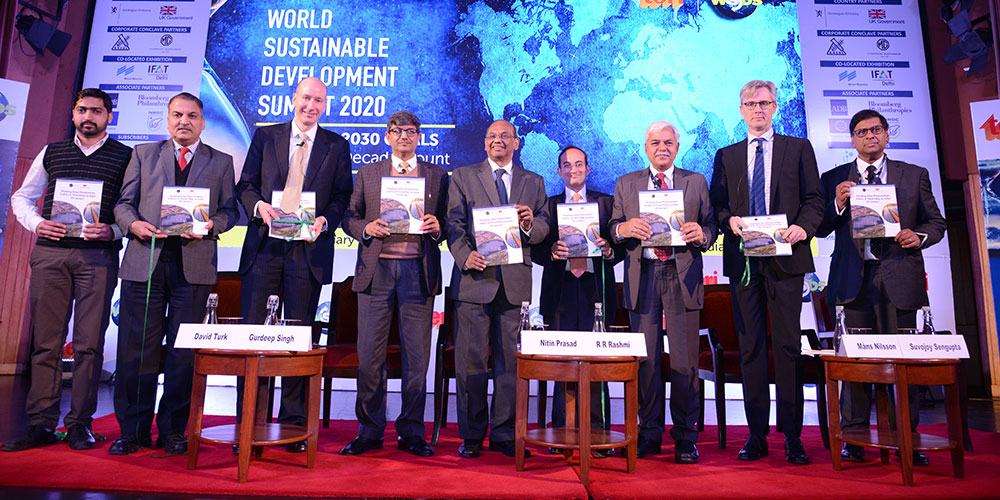Potential Assessment of Floating Solar PV (FSPV) in India
The project has conducted potential assessment of Floating Solar PV (FSPV) in India, as part of ETC programme. A report has been prepared under the project.
Floating Solar Photovoltaic (FSPV): A Third Pillar to Solar PV Sector?
The report has found that India's reservoirs have 18,000 sq km of area that have the potential to generate 280 GW of electricity through floating solar photovoltaic (PV) plants
Report Authors: Mohit Acharya, Sarvesh Devraj, Dr. Ashvini Kumar

India has done a remarkable job in terms of deployment of renewable energy-based installations, growing almost 3.5 folds in the last 5–6 years, with most of the capacity coming from onshore wind and solar photovoltaic (PV) based installations. At present India's grid-connected solar PV sector is majorly dominated by the ground-based installations (93%1) while the balance is contributed by rooftop the based solar PV installations. The installation cost of utility-scale solar PV in the country has declined by 84%2 between 2010-2018, making India world's topmost country in achieving the lowest installation cost for utility scale solar PV. It is well know that solar PV deployment is quite land intensive and scaling up the project sizes requires large chunk of contiguous land parcels, which becomes challenging in many situations. In order to keep pace of development commensurate with the national targets for solar capacity additions, alternatives are required to be explored and established. Floating solar PV (FSPV) or floatovoltaics is one such alternative, which has started getting traction worldwide and is expected to grow strongly over the coming years. It is estimated that the annual capacity addition may rise from the current installed of 1.314 GWp in 2018 to 4.6 GWp by 2022. Presently, China is the leading international market followed by Japan and South Korea. India also has very bright prospects to develop FSPV projects due to availability of large water bodies.
As a technology, FSPV is in a very early stage of development in India. Till now, only a few projects with cumulative capacity of 2.7 MW have been installed. However, over 1.7 GW capacity projects are reported to be in various stages of development. FSPV market appears to inch forward to make its presence felt in India and the tariffs discovered through bids have already shown rapid reductions. So far large-to-medium size man-made inland water bodies seems to have attracted initial interest to install FSPV based power plants, but all these waterbodies were created to serve various purposes like – irrigation, water supply, fishing, hydroelectric, navigation, etc., and this warrants great deal of diligence to balance out various usages of these waterbodies on the basis of accurate information.
The Energy and Resources Institute (TERI), New Delhi, India with support from the Energy Transitions Commission (ETC), India, has undertaken a study to analyse data on country's medium and large reservoirs to estimate the potential of FSPV in the country. It is observed that about 18,000 km2 water surface area spreading across various states and UTs is suitable for the installation of FSPV plants. The overall potential is a strong indication of the extent of the surface area than can be made available for setting up these projects, and even a capacity of about 280 GW is possible. The various factors determining the overall potential include percentage of water surface area coverage, water level variations, the purpose of the water body, and proposed plant location. The reports presents state-wise details of the potential in the form of a web-based user interactive tool – India Floating Solar PV-Tool. The tool developed under this study also provides details regarding the historical changes in the waterbody, and is likely to be quite useful to stakeholder such as policy developers (viz. MNRE, NITI Aayaog, state governments), projects developers, implementing agencies, investors, and financing institutions. The report also covers the best practice guidelines for installing FSPV projects.
